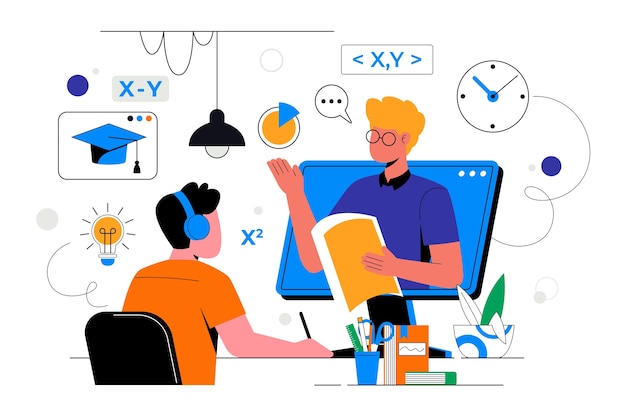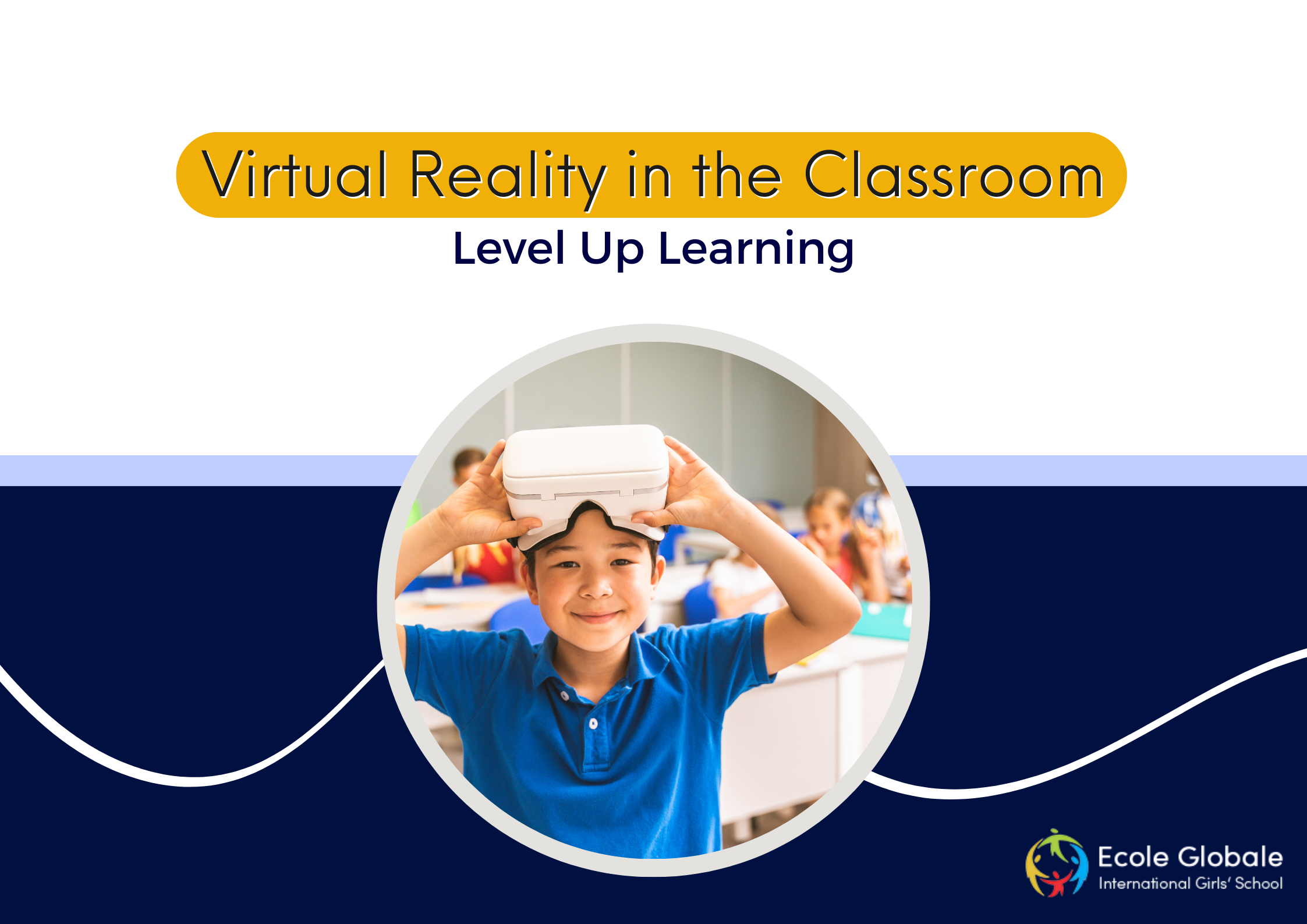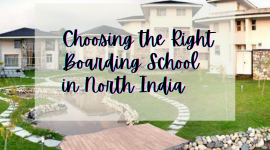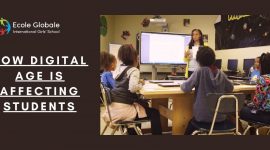Virtual Reality (VR) technology has emerged as a powerful tool in education, transforming the landscape of teaching and learning in classrooms worldwide.
At Ecole Globale, a leading institution dedicated to academic excellence and innovation, the integration of Virtual Reality in the classroom represents a groundbreaking approach to enriching student engagement and expanding educational horizons.
In this comprehensive exploration, we delve into the multifaceted applications of Virtual Reality in the Classroom across diverse subjects and grade levels, examining its profound impact on student learning outcomes and pedagogical practices.
Understanding the Rise of Virtual Reality in the Classroom

In recent years, the adoption of Virtual Reality in the classroom for education has witnessed unprecedented growth, fueled by advancements in hardware, software, and immersive content development.
Unlike traditional instructional methods, Virtual Reality in the Classroom offers a unique opportunity for students to experience learning in a multisensory and interactive environment, transcending the boundaries of conventional textbooks and lectures.
At Ecole Globale, educators recognize the transformative potential of Virtual Reality in the classroom as a catalyst for sparking curiosity, fostering critical thinking skills, and enhancing retention of complex concepts.
Immersive Learning Experiences Across Disciplines

One of the most compelling aspects of VR technology is its versatility in catering to diverse learning needs across a wide range of disciplines and grade levels.
From mathematics and science to history and literature, Virtual Reality in the classroom provide simulations and interactive experiences provide students with unparalleled opportunities to explore abstract concepts and real-world phenomena in a tangible and engaging manner.
For instance, in science classes, students can embark on virtual field trips to explore ecosystems, conduct virtual experiments in chemistry and physics laboratories, and delve into the intricacies of human anatomy through immersive simulations.
Similarly, in history and social studies classes, Virtual Reality technology enables students to step back in time and witness historical events unfold before their eyes, fostering a deeper understanding of cultural heritage and historical context.
Through interactive storytelling and virtual reconstructions of ancient civilizations, students can gain insights into the complexities of human history and develop empathy for diverse perspectives and experiences.
Enhancing Collaborative Learning and Problem-Solving Skills

Beyond individual exploration, Virtual Reality in the Classroom facilitates collaborative learning experiences that promote teamwork, communication, and problem-solving skills.
By creating shared virtual environments and interactive simulations, students can collaborate on group projects, engage in peer-to-peer discussions, and participate in collaborative problem-solving activities in real time.
This collaborative approach not only enhances social interaction and communication skills but also fosters a sense of community and camaraderie among students, transcending geographical boundaries and cultural differences.
Moreover, VR technology enables educators to design immersive learning experiences that challenge students to think critically, analyze information, and apply knowledge to solve real-world problems.
Through interactive scenarios and simulations, students are encouraged to explore different perspectives, evaluate evidence, and make informed decisions, thereby cultivating essential skills for success in the 21st-century workforce.
Empowering Personalized Learning Journeys

One of the defining features of VR technology is its ability to personalize the learning experience based on individual preferences, learning styles, and proficiency levels.
Through adaptive learning algorithms and interactive simulations, educators at Ecole Globale can tailor educational content to meet the unique needs and interests of each student, providing targeted interventions and support where needed.
Whether it’s adjusting the difficulty level of interactive exercises, providing instant feedback on student performance, or offering additional resources for further exploration, VR technology empowers students to take ownership of their learning journey and pursue knowledge at their own pace.
Furthermore, VR technology offers a myriad of opportunities for differentiated instruction, allowing educators to scaffold learning experiences and provide customized support to students with diverse learning needs and abilities.
By leveraging VR-based assessments and analytics, educators can gain valuable insights into student progress, identify areas for improvement, and design targeted interventions to support student learning and growth.
Fostering Empathy and Global Awareness

In addition to academic subjects, VR technology has the power to cultivate empathy, compassion, and global awareness among students by immersing them in diverse cultural contexts and perspectives.
Through virtual simulations and interactive storytelling, students can gain firsthand insights into the lived experiences of individuals from different backgrounds and walks of life, fostering empathy and understanding for diverse perspectives.
At Ecole Globale, educators recognize the importance of fostering global citizenship and cultural competence among students, preparing them to navigate an increasingly interconnected and diverse world with empathy, respect, and open-mindedness.
By incorporating VR experiences that highlight global issues, cultural traditions, and social justice issues, educators can empower students to become agents of positive change in their communities and beyond.
Challenges and Considerations in Implementing VR in Education
While the potential of VR technology in education is vast, its widespread adoption also poses certain challenges and considerations. Technical limitations, such as the high cost of VR equipment and software, as well as concerns regarding accessibility and equity, may hinder its implementation in resource-constrained settings.
Moreover, ensuring that VR experiences align with educational objectives and curriculum standards requires careful planning, collaboration, and teacher training.
Despite these challenges, the benefits of integrating VR into the classroom far outweigh the obstacles, offering unparalleled opportunities for enhancing student engagement, critical thinking, and creativity.
By fostering immersive and interactive learning experiences, Virtual Reality in the classroom empowers students to explore, experiment, and collaborate in ways that were previously unimaginable, preparing them to thrive in a rapidly evolving digital landscape.
Conclusion
In conclusion, Virtual Reality technology holds immense promise for revolutionizing education and transforming the way students learn, engage, and interact with content.
At Ecole Globale, the integration of Virtual Reality into the curriculum reflects our commitment to innovation, excellence, and student-centered learning.
By harnessing the power of VR technology, we strive to create dynamic and immersive learning experiences that inspire curiosity, foster critical thinking, and prepare students for success in the 21st century and beyond.
As we continue to explore the possibilities of Virtual Reality\ in education, let us embrace the transformative potential of this groundbreaking technology to unlock new opportunities for teaching, learning, and collaboration.
Together, we can harness the power of Virtual Reality to shape a future where education knows no boundaries, and every student has the opportunity to reach their full potential.









